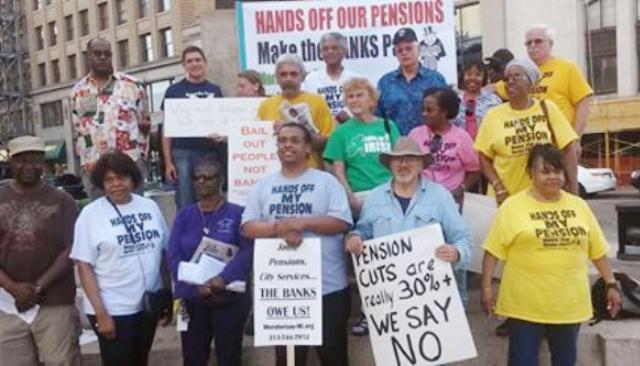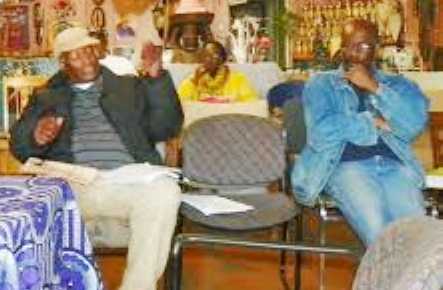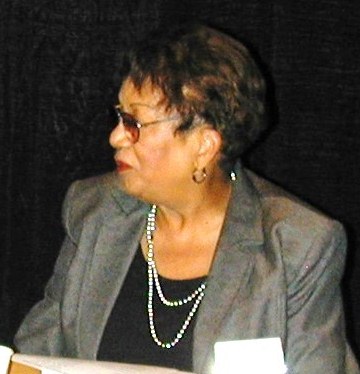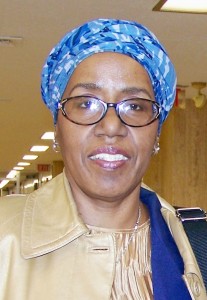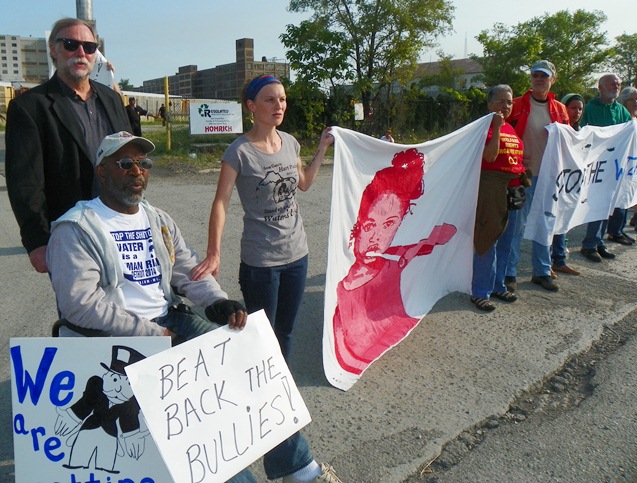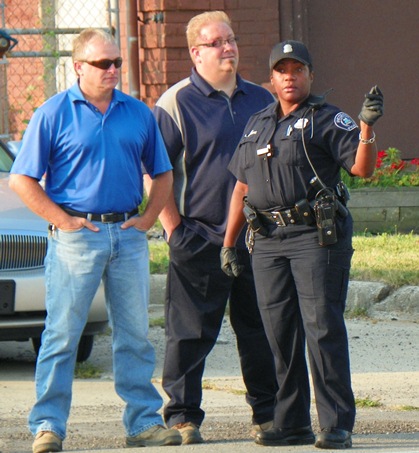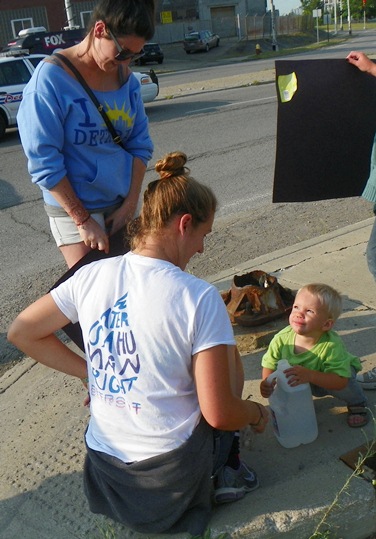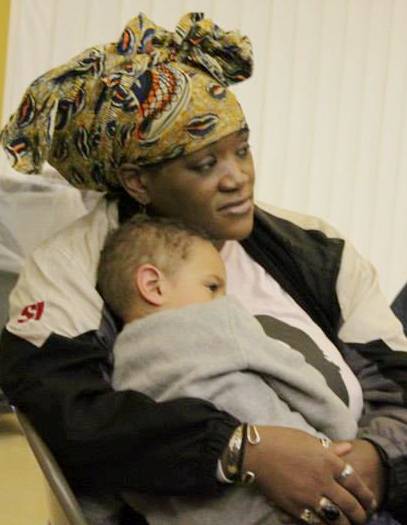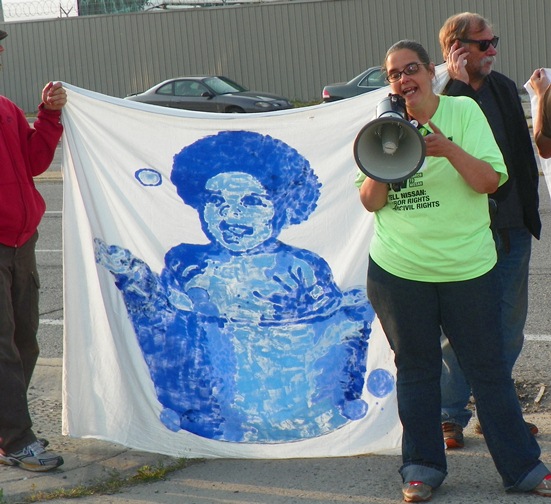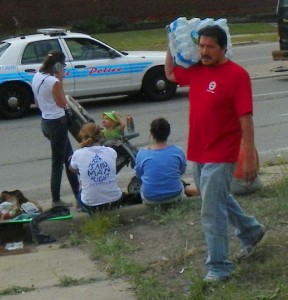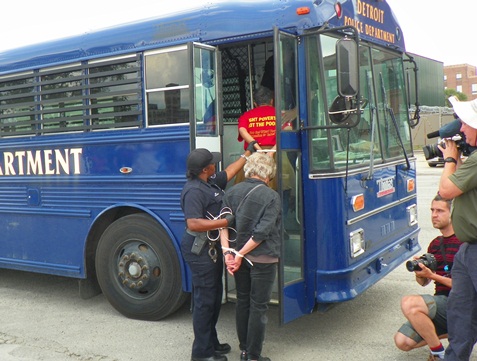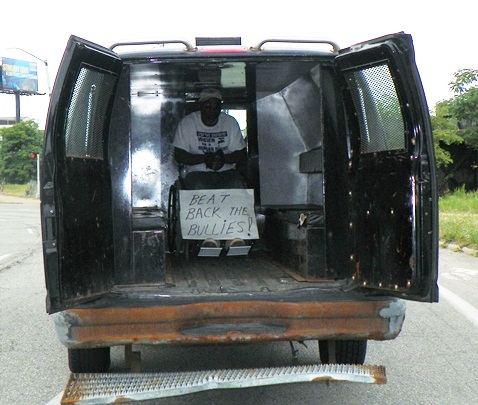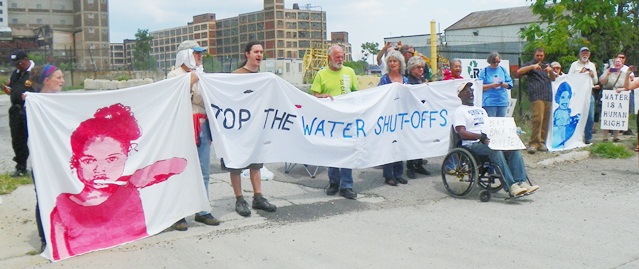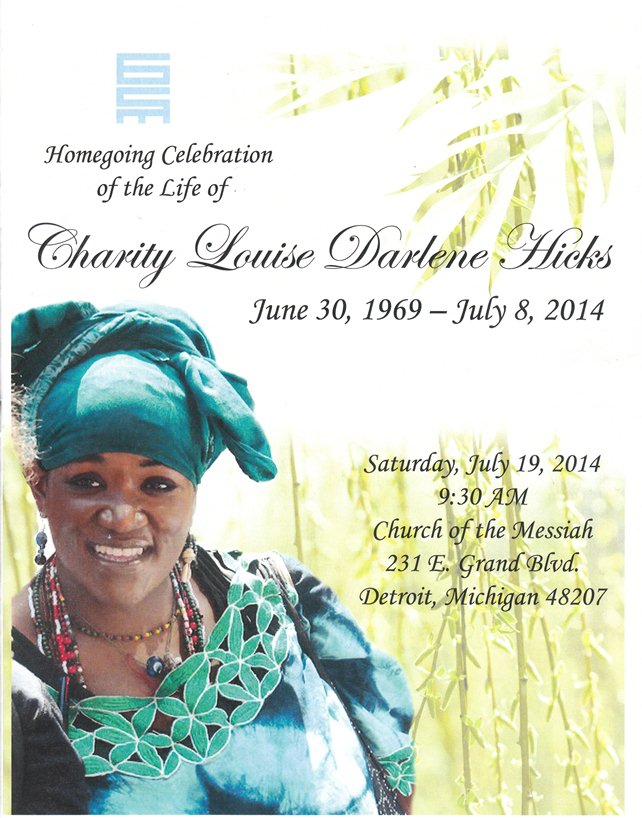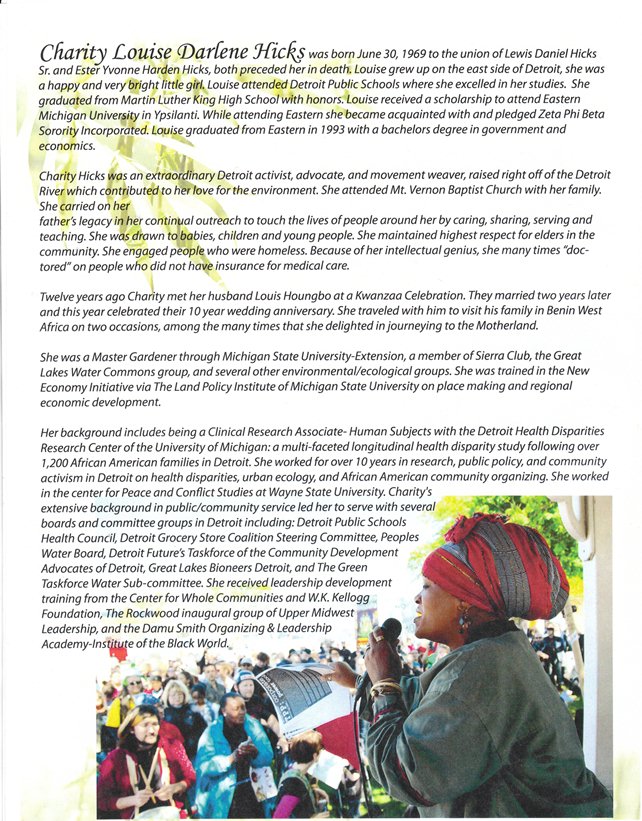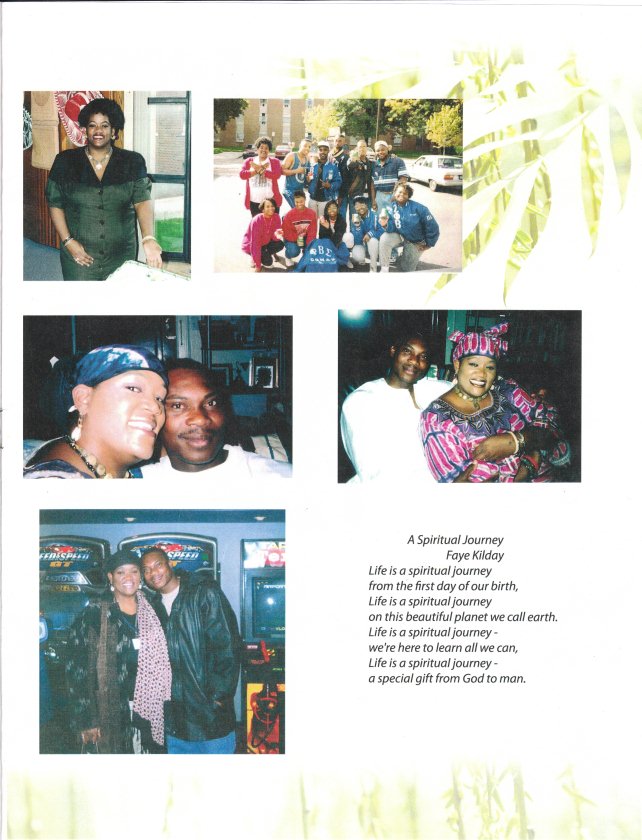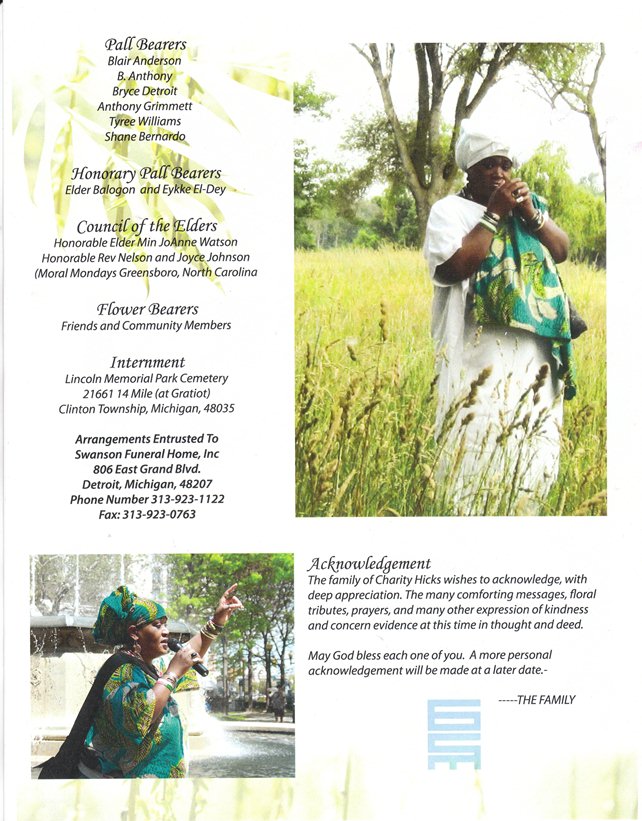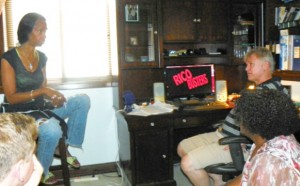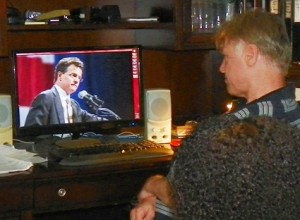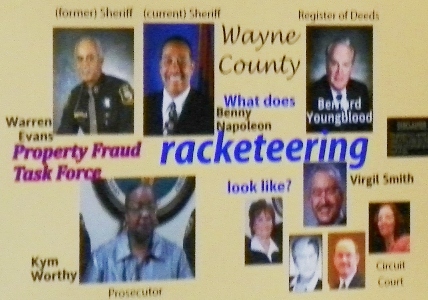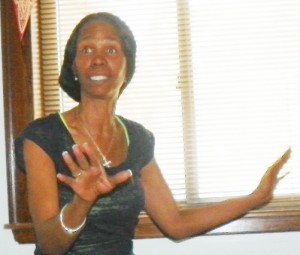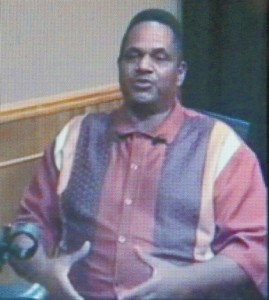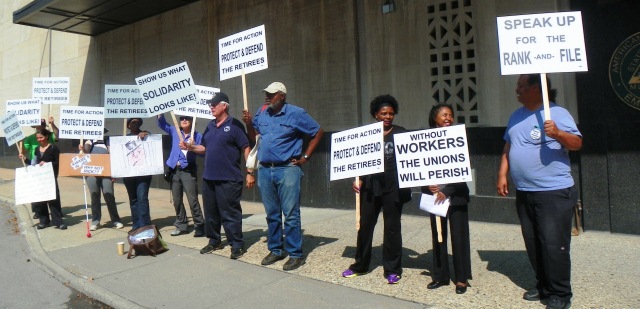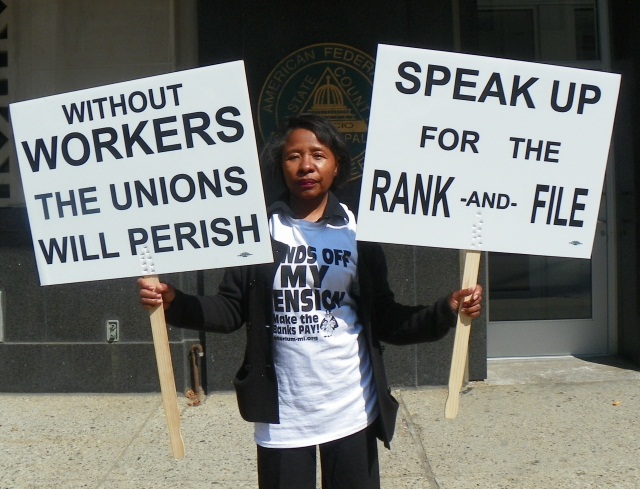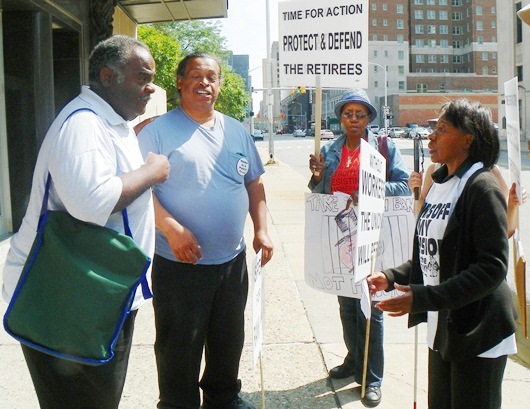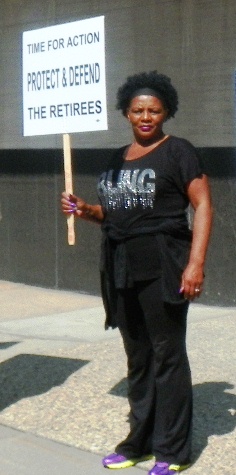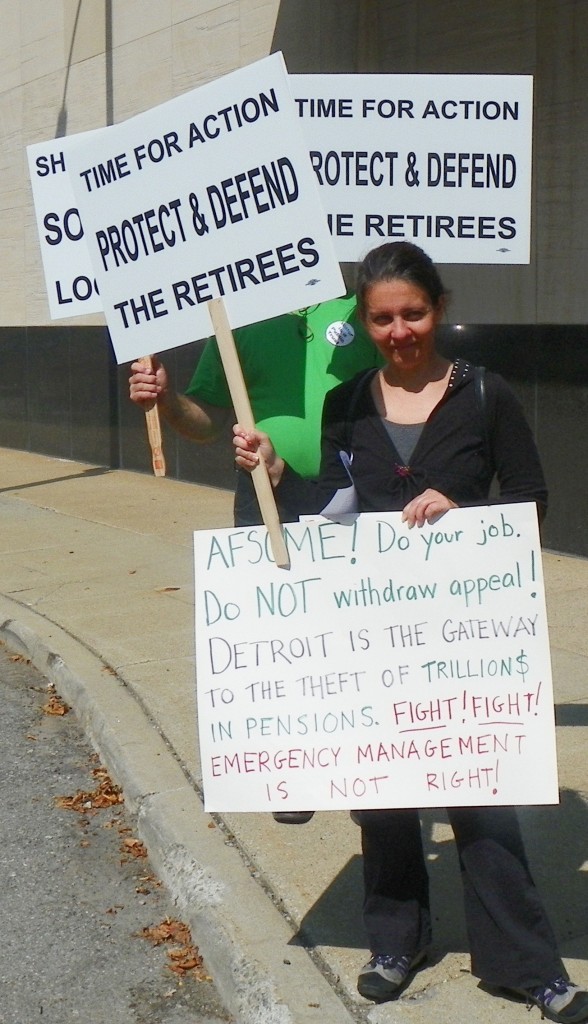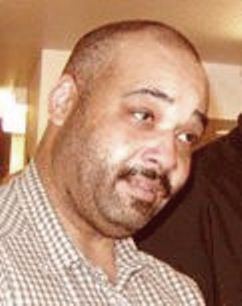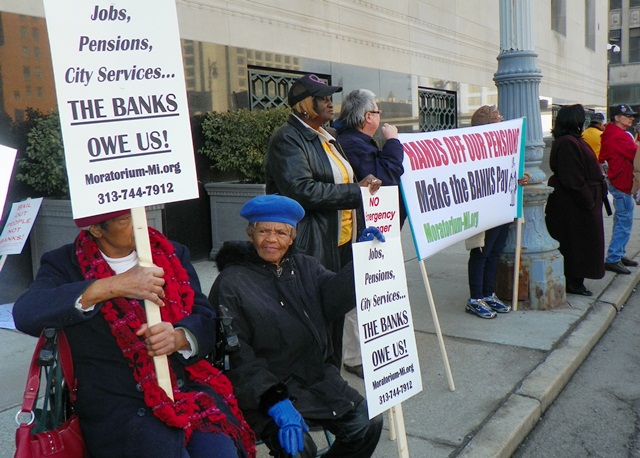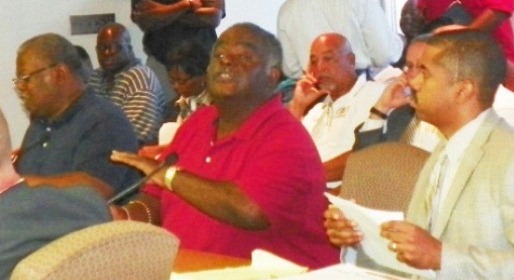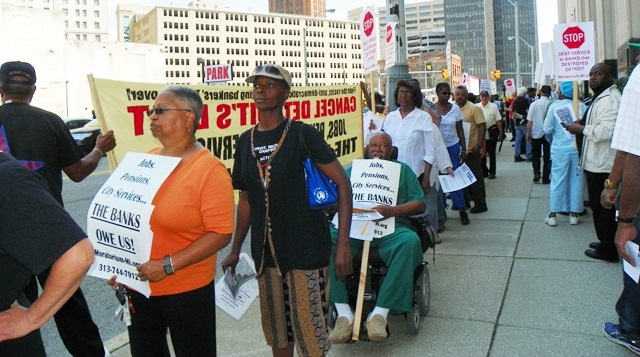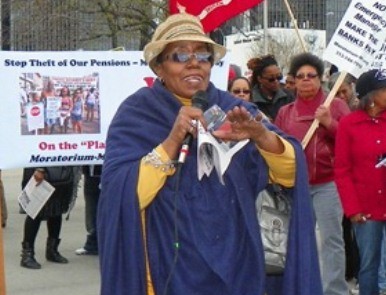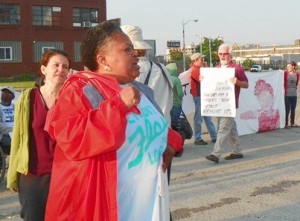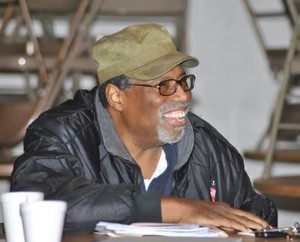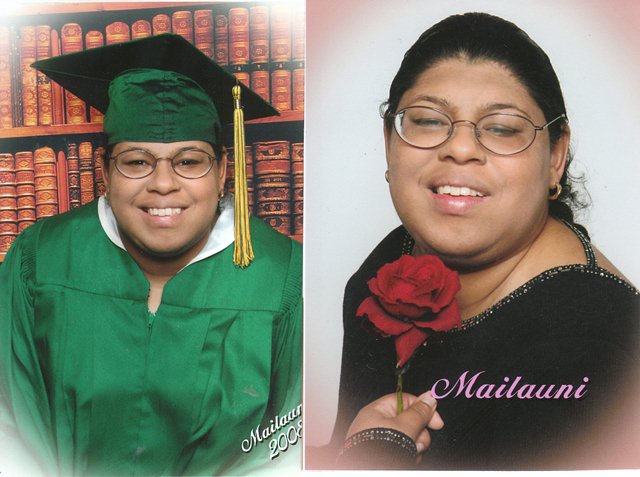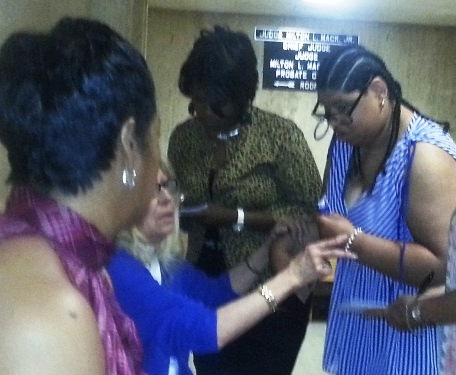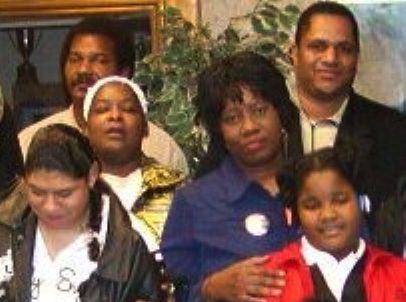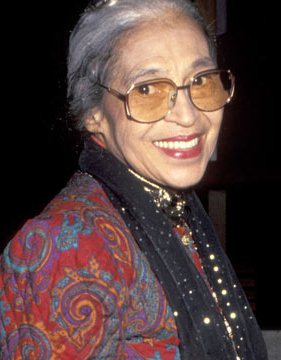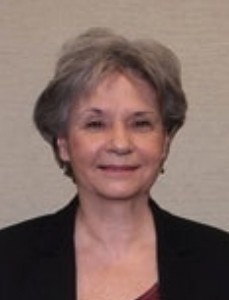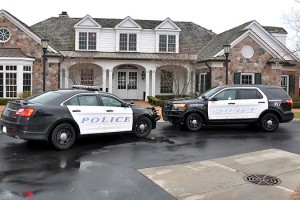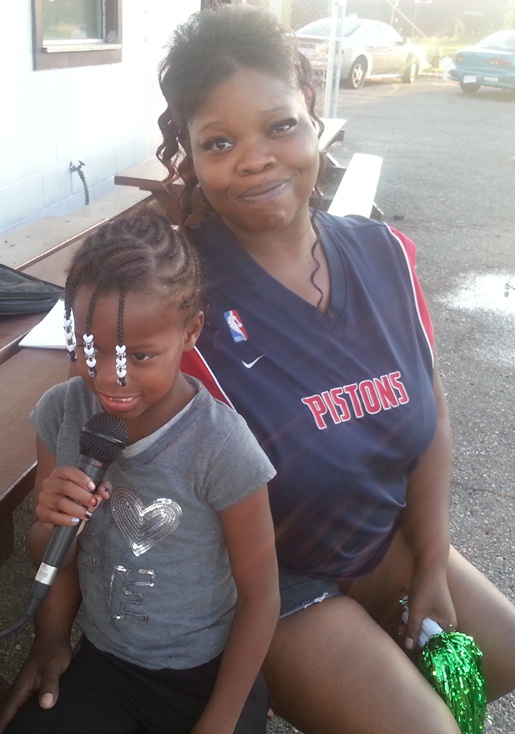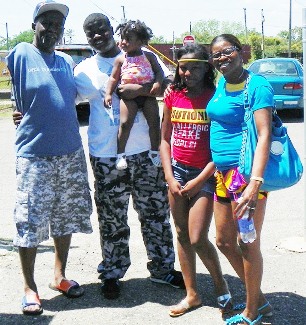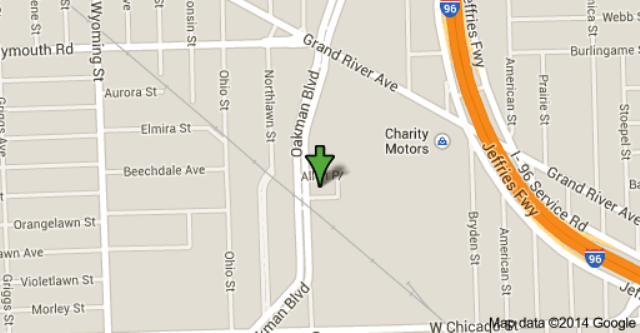DERAIL THE BANKRUPTCY NOW!
Sixth Circuit suspends hearing on appeals until after plan trial, received letters from unions, retiree groups pledging to dismiss appeals
Retirees outraged, question validity of “Yes” vote and procedures
Aleem, Williams pepper court with more objections
Legal, other alternatives under consideration
By Diane Bukowski
Aug. 5, 2014
DETROIT – City workers and retirees, relieved that unions and retirement systems did not outright withdraw their bankruptcy eligibility appeals at the Sixth Circuit Court July 31, now are angered that the appellants, abetted by the “City” (Kevyn Orr) and the state, have pledged to nix the appeals after the plan confirmation trial is concluded. The trial, during which arguments regarding the city’s “Plan of Adjustment” of its debts, is set to begin Aug. 21, after several delays.

- DWSD’s Lake Huron water treatment plant. DWSD is the third largest water utllity in the country. It provides water service to almost one million people in Detroit and three million people in 126 neighboring Southeastern Michigan communities throughout Wayne, Oakland, Macomb St. Clair, Lapeer, Genesee, Washtenaw and Monroe counties. It had 2,000 employees, 1,000 of whom are represented by AFSCME. The numbers have been drastically cut through lay-offs and attrition as Detroit EM Kevyn Orr, bankruptcy judge consider privatization/regionalization. Detroiters built and paid for the entire system through bond proposals.
Retirees picketed AFSCME Council 25’s headquarters July 31, after Council 25 President Al Garrett told VOD that AFSCME would definitely withdraw its appeal. The plan includes drastic pension and health care cuts for retirees and active employees. Combined with proposals that could privatize the City’s largest asset, the Detroit Water and Sewerage Department, among others, the plan could actually cause the collapse of the retirement systems. It is also likely to cause a severe reduction in services to Detroit residents, such as recent water shut-offs, plans to reduce street lighting by 40 percent, and elimination of services in areas sparsely populated after massive foreclosures over the last decade.
In a July 31 letter to the Sixth Circuit, nine attorneys wrote, “Appellants accordingly will dismiss these appeals . . . if and when there is final confirmation of the City’s proposed plan (which will incorporate the settlements and the outside funding commitments known as the ‘Grand Bargain.’) Most of the Appellants already have settled and support the City’s proposed plan, and have agreed to dismiss their appeals at that time. The Appellants that have not yet settled hope and expect to do so soon. Their settlements would involve similar agreements regarding dismissal of their appeals after confirmation of the plan.”
The signers included attorneys for the 32,000 member city retirement systems, AFSCME Council 25, the Official Committee of Retirees, the Retiree Association Parties, the Detroit Police Command Officers Association, the Detroit Firefighters Association, the Detroit Police Officers Association, Michigan Attorney General Bill Schuette, the state, and the city.
The letter added “ . . . a decision by this Court on the merits would unnecessarily resolve important questions of federal and state constitutional law. The Court likely will not have to decide these issues if the Court gives the parties additional time to finalize their settlements — because, as already stated, Appellants will dismiss their objections to eligibility once the settlement and plan are finalized. It would be extraordinary for this Court to reach out and decide the meaning of a state constitutional provision protecting pensions — a decision that will have ramifications well beyond this case — with the parties on the eve of finalizing a consensual agreement.” Click on COA letter 7-31-14 re holding bankruptcy appeals in abeyance to read entire letter.
That “consensual agreement” as embodied in the Plan of Adjustment would negate the validity of Article 9, Section 24 of the Michigan Constitution, which protects public pensions. Twenty-four states have similar protections, with Michigan’s among the strongest.
In a separate letter, David DeChiara, an attorney for the UAW, proposed an alternate resolution.
“The UAW proposes that the Court simply remand this case back to the bankruptcy court, with instructions to the bankruptcy court to decide, in the context of the confirmation trial . . . .whether Michigan Governor Snyder had the power to authorize the federal judiciary to set aside the protections afforded by . . . the Michigan Constitution . . .”
DeChiara said the UAW would withdraw the remainder of its Sixth Circuit appeal if the Court remanded the case to Rhodes. Click on UAW 7-31-14 Letter to Sixth Circuit for full letter.
Chad Livengood of the Detroit News first broke the story.
He reported July 31,“Five major Detroit creditor groups representing pensioners joined the city and State of Michigan on Thursday in asking a federal court to delay action on appeals or risk jeopardizing the bankruptcy “grand bargain”. . .The coalition of attorneys asked for a delay of the appeals proceedings pending the outcome of a crucial trial next month over the city’s plan to shed $7 billion in debt.” http://www.detroitnews.com/article/20140731/METRO01/307310058#ixzz39dyax2Ke
VOD obtained the actual copies of the letters to analyze why the retirement groups and unions would join with the city and state in asking the Sixth Circuit for the stay.
At the meeting of the Detroit Concerned Citizens, Active Employees, and Retirees, (DCCAER), held Aug. 4, Hassan Aleem, a legal analyst for the group as well as a City of Detroit retiree, said he hoped the court’s subsequent agreement to delay the proceedings as referenced in Livengood’s article might mean it felt there were cogent, important issues to consider in the appeals.
However, the actual letters dashed those hopes.
Carl Williams, Aleem’s co-analyst, told the meeting angrily, “Our people fought and died for our Constitutional and voting rights. It is unbelievable that those numbers voted ‘Yes’ on the plan and gave up those rights.”
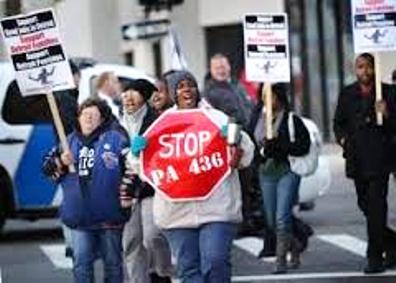
- Bankruptcy protester calls for an end to the Emergency Manager law, PA 436, which has taken over Michigan’s majority Black cities.
The DGRS ballot said, “By accepting the Plan AND if the Initial Funding Conditions are satisfied or waived, you will be forever releasing any rights you may have against the State and other nondebtor parties for matters described in the Plan and you will be forever barred from suing the State or other nondebtor parties for matters described in the Plan. Specifically, this release would release all claims and liabilities arising from or related to the City, the chapter 9 case (including the authorization given to file the chapter 9 case), the Plan and exhibits thereto, the Disclosure Statement, PA 436 and its predecessor or replacement statutes, and Article 9 Sec. 24 of the Michigan Constitution.”
Retirees at the meeting raised other objections to the validity of the vote. Members of the Police and Fire Retirement Systems allegedly voted 82 percent “Yes,” while members of the Detroit General Retirement System voted 73 percent “Yes.”
However, only 16,524 ballots were included in the count, although the two systems have 32,000 members. Many at the meeting asked whether everyone had even received a ballot, saying they doubted half the membership would not vote at all. Only 1400 ballots were listed as “invalid” by Kurtzman Carson Consultants, LLP, the balloting agent.
At two retiree meetings held by the DGRS, canned presentations recommending a Yes vote were given, and response from the retirees limited to questions submitted on cards.
Retiree representatives including Shirley Lightsey of the Detroit Retired City Employees Association, Al Garrett of Michigan AFSCME Council 25, and Attorney Michael VanOverbeke of the Detroit General Retirement System (DGRS) had said they would follow the wishes of the voters.
The vote count was conducted by Kurtzman Carson, LLP in El Segundo, California, with no challengers present. Ballots were mailed with “Yes” vote endorsements by Detroit Emergency Manager Kevyn Orr, Lightsey of the DRCEA, and Don Johnson of the Detroit Retired Police and Firefighters Association.
The DGRS individually mailed its endorsement of a “Yes” vote to its membership, while Dentons LLP, paid $4.6 million by the court to represent the “Official Retiree Committee,” sent out a letter endorsing a “Yes” vote jointly with the City of Detroit.
However, the City (Orr and Jones Day), in their original motion for the Solicitation Package sent with the ballots asked for it to include “evidence in support of any objections to the plan,” as follows:
‘’14. The City proposes to send the following materials (a “Solicitation Package”) to each holder of a claim that is eligible to vote on the Plan: a notice, substantially in the form attached hereto as Exhibit 6A (the “Confirmation Hearing Notice”), which includes (a) notice of the Court’s order approving the adequacy of the Disclosure Statement; (b) the date, time and location of the Confirmation Hearing(s); and (c) the deadlines for voting on the Plan and submitting evidence in support of any objections to the Plan . . .”

One-sided Municipal Distress Forum on Chapter 9 and Emergency Managers, held Oct. 10, 2012 had the following panelists: (l to r)Frederick Headen of the State Treasury, who has endorsed dozens of municipal takeovers, David Plawecki, U.S. Bankruptcy Judge Steven Rhodes, Douglas Bernstein and Judy O’Hara, both EM trainers, with O’Hara a co-author of PA 4, the predecessor to PA 436, and Charles Moore, accountant at Conway McKenzie and a chief (non-expert) witness for Kevyn Orr in the bankruptcy eligibility trial.
In his order on the motion, filed March 11, Rhodes conveniently eliminated the mention of evidence regarding objections to the Plan as follows:
“6. The Solicitation Package shall be required to include the following information and documents: a. a copy of the Confirmation Hearing Notice; b. a CD-ROM which includes the Plan, the Disclosure Statement and all exhibits thereto that have been filed in this case prior to the date of the mailing of the Solicitation Package; c. the appropriate form of Ballot for voting on the Plan; d. a Ballot return envelope; e. a copy of the Amended Tabulation Rules; f. a copy of the Notice of Voting Dispute Resolution Procedures; and g. a cover letter (i) describing the contents of the Solicitation Package, (ii) describing the contents of the CD-ROM and instructions for using the CD-ROM and (iii) providing information about how to obtain, at no charge, hard copies of any materials provided on the CD-ROM. 7. The ballots, the form of which will be determined in connection with the Disclosure Statement Hearing (collectively, the “Ballots”), will be distributed as part of the Solicitation Package as provided below.”
The language in the final solicitation package left out any description of evidence regarding objections to the plan, including that presented by unions and retiree groups at the Sixth Circuit Court Appeals.

Sixth Circuit panel of judges considering appeals: (l to r) : Julia Smith Gibbons, Raymond M. Kethledge, Jane Branstetter Stranch. Stranch is an Obama appointee, the other two were appointed by Republican presidents.
Regarding those appeals, the package said only:
“GRS, PFRS, the Retiree Committee, several unions and several associations representing the City’s retirees have appealed from the Bankruptcy Court’s ruling that found the City to be eligible to file its bankruptcy case and also held that accrued pension benefits could be reduced. The appeals are pending before the United States Court of Appeals for the Sixth Circuit.
The Outside Funding of $816 million will not be available for GRS or PFRS if these appeals continue. The Outside Funding will only be available if these appeals are resolved, dismissed or withdrawn prior to approval of the Plan.
If the appeals continue and are successful and no further appeals or other legal actions are taken, then either the City’s bankruptcy case may be dismissed (and no plan would be confirmed), or the appellate court may hold that, although the City may pursue a restrucfuring in this bankruptcy case, it cannot reduce or impair your pension (and the Plan could not be confirmed). In either case, the Outside Funding of $816 million would not be available for GRS and PFRS.
Even if the appellate court decides that the City cannot legally reduce your pension, the City’s financial problems mean that it would still not have enough money to make the required pension contributions to GRS or PFRS. So you would still not be assured of receiving a full pension payment even if you had a legalright to a full pension payment.
If the appeals are unsuccessful and no further appeals or other legal actions are taken, then the Plan as written will be unaffected.”
Many of the attendees at the DCCAER meeting said they had filed individual objections to the voting procedures with Rhodes. Williams told the group that the voting procedures violated federal election law.
Cecily McClellan, a leader of the DCCAER, said the group had filed a Freedom of Information Act Request to obtain the complete list of names and addresses of retirement system members, and repeatedly asked the DGRS for the list, to no avail. The DCCAER earlier issued a statement strongly objecting to the plan, titled “GRAND THEFT or Grand Bargain,” and went city-wide with caravans including U-Haul trucks with “VOTE NO” banners.
During the meeting, attendees signed numerous other objections drafted by Aleem and Williams. Plans were laid to seek legal and other recourse to invalidate the vote and “derail the bankruptcy” as Dentons attorney Carol Neville put it, while excusing her failure to seek recourse against the city’s failure to fully disclose on the ballots and in the solicitation package that it had added 6.75 percent interest to the Annuity Savings Plan recoupments.
The agreement of major unions representing municipal workers, and their retirement systems and groups, to wipe out their appeals of a bankruptcy eligibility decision that puts millions of retirees across the U.S. in jeopardy is reprehensible, and likely represents the most major sell-out of workers by their elected officials in U.S. history.
Recent related articles:
http://voiceofdetroit.net/2014/08/03/detroit-water-shut-offs-city-takeover-still-on-full-blast/
http://voiceofdetroit.net/2014/07/13/britain-strikes-for-a-day-against-low-pay-job-cuts/
http://voiceofdetroit.net/2014/06/07/why-im-voting-no-on-the-grand-bargain/
http://voiceofdetroit.net/2014/04/11/vietnam-is-sentencing-corrupt-bankers-to-death-by-firing-squad/

